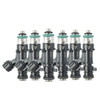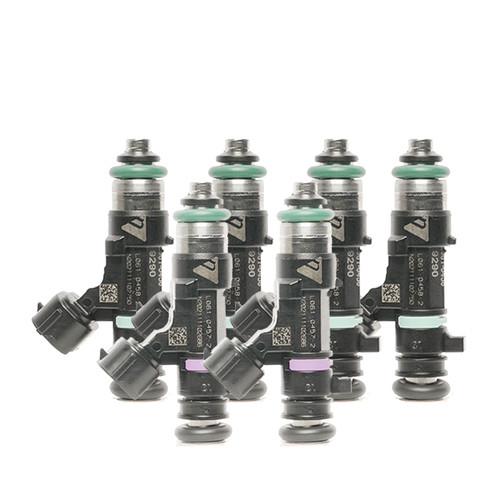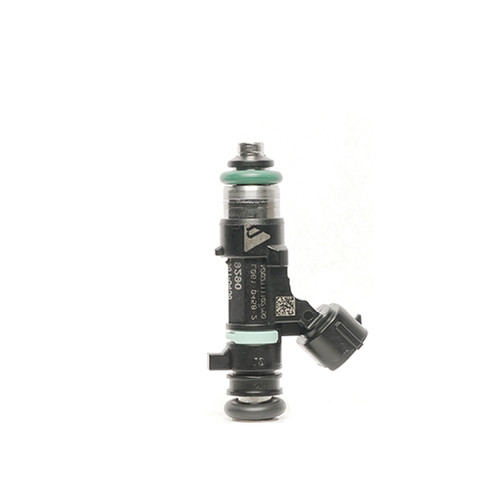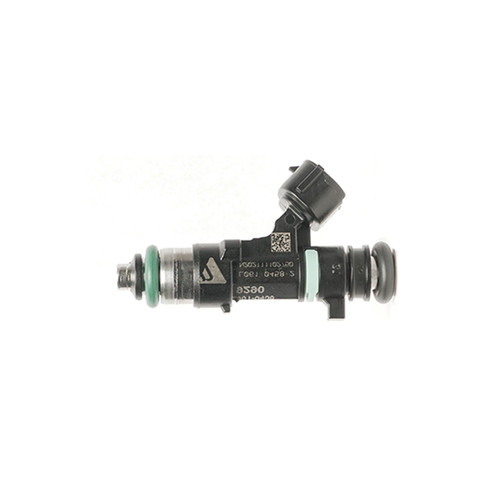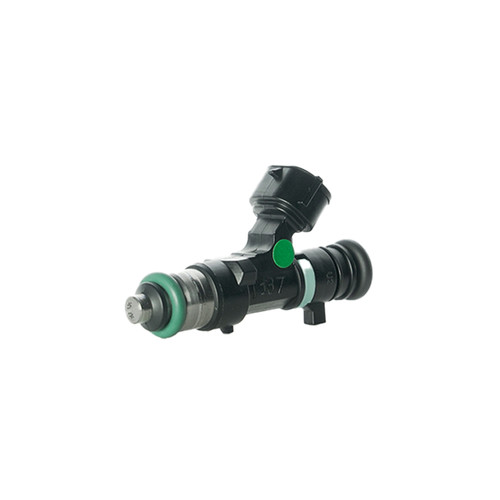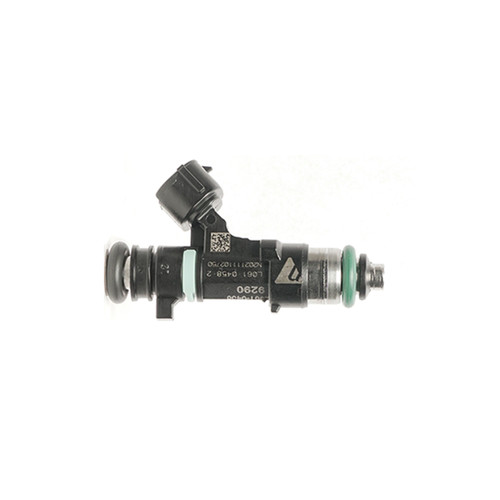What else sets Nostrum apart?
- Spray targeting specific to Nissan VQ35 engine with twin sprays for the 4 valve heads
- Direct fitment with no electrical adapters or fuel rail spacers
- Uses factory fuel injector clips to factory fuel rail
- Set of 6 batched injectors (Flow matched for static and multiple dynamic points)
- Available tuning data
- Recommended for use in a boosted VQ35 or E85
Nostrum High Performance’s next-generation port fuel injectors are designed to fit the architecture of your engine using state-of-the-art CFD software which takes exact fuel injector location, intake manifold design, and cylinder head geometry into account.
Nostrum PFI injectors are all tested on Nostrum’s temperature and pressure controlled two station production PFI injector test stand. This testing includes multiple preconditioning cycles followed by testing for tip leakage, resistance, inductance, dynamic flow, static flow as well as injector opening and closing time. Nostrum PFI injectors are then sorted and batched based on dynamic flow, static flow, offset, injector opening time, and injector closing time (Based on SAE J1832 low pressure gasoline fuel injector testing standard).
Each set includes color coded injectors that are keyed for injector spray orientation. Detailed installation instructions are included.

Please note that these injectors do require calibration changes to run properly.
- 2003-2008 Nissan 350Z
- Infiniti G35
Dyno graph sponsorship results:
Randy's absolutely beautiful supercharged G35 put down 510 whp with style!
Be sure to follow him on IG @originalg35

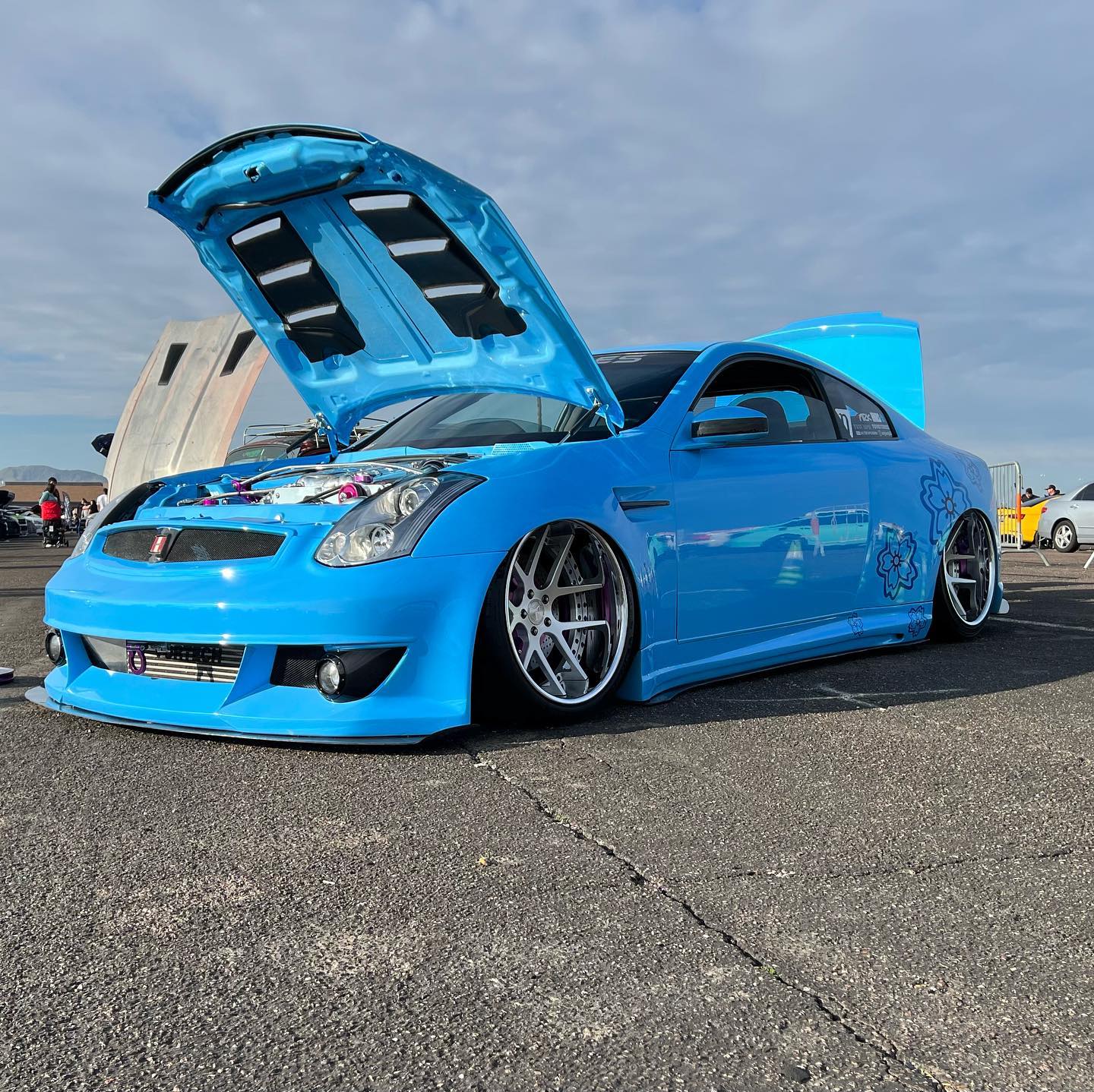
*Horsepower and Torque numbers are approximate and can vary significantly depending on numerous factors including what supporting upgrades are done to the vehicle, ambient temperature, elevation, road surface, tire selection & condition, fuel octane and quality, vehicle weight, and more. The advertised numbers herein are based on optimal conditions and utilizing proper supporting modifications. Your results may vary.
Frequently ask questions:
Q: How are your injectors batched?
A: At Nostrum, we ensure the highest quality of our PFI injectors through rigorous testing and meticulous batching processes. Our PFI injectors undergo comprehensive evaluation on Nostrum's advanced two-station production PFI injector test stand, equipped with precise temperature and pressure controls.
The testing procedure consists of multiple preconditioning cycles, followed by a series of critical assessments. These assessments include checking for tip leakage, measuring resistance and inductance, evaluating dynamic flow at various pulse width test points, examining static flow under different pressures, and analyzing static and dynamic minimum operating voltage (SMOV & DMOV). Additionally, we assess the opening and closing time of the injectors.
After thorough testing, the Nostrum PFI injectors are carefully sorted and grouped, a process known as "batching." This batching is based on several factors, such as dynamic flow, static flow, and offset, ensuring that injectors with similar performance characteristics are grouped together.
By adhering to these stringent testing and batching criteria, we can guarantee the reliability, consistency, and optimal performance of Nostrum PFI injectors.
Q: Why do your numbers say I will make less horsepower on E85 than 93 octane?
A: Great question! The numbers we list in the product descriptions are similar to the numbers a turbo charger lists for air flow. The numbers are the "fuel system capacity to generate power" regardless of the other engine system limitations (air handling, mechanical limitations, knock propensity). Essentially the numbers are calculated assuming "sufficiently large air flow", "sufficiently capable mechanical assemblies" and disregarding knock limits. The equation uses actual observed engine volumetric efficiency (when available from sponsorship vehicles) and fuel capacity (including target pressures) to calculate power. Gasoline has more energy per mass volume than E85. So the higher fuel flow capacity will mathematically generate higher power potential for a gasoline than a high ethanol content fuel. The other variables (air flow, spark, rotating assembly strength, charge cooling, mechanical assembly strength) are highly variable from build to build. This is why we state horsepower capacity for the fuel system – representing the potential of the fuel system if you have all the other aspects of your build addressed!


